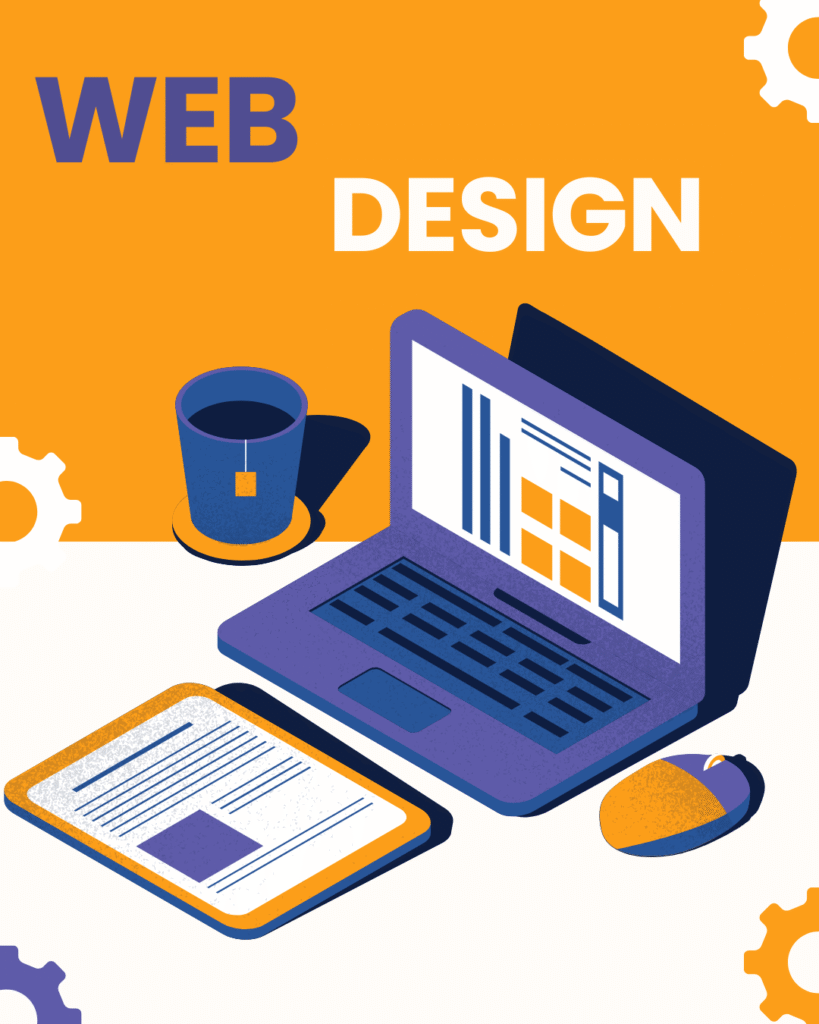
Web Design from Scratch
Creating a website may seem overwhelming at first, especially if you have no prior experience. But the truth is, designing a website from scratch can be a rewarding and achievable task when you follow the right steps. In this guide, we’ll break down the process in simple terms to help you understand everything from planning to launching your website.
What Does “Web Design from Scratch” Mean?
Designing a website from scratch means building it from the ground up, without relying on pre-made templates. You create everything—layout, design, colors, content, and functionality—based on your unique needs and goals.
Why Design from Scratch?
Designing from scratch gives you full creative control. You’re not limited by template constraints, and you can build a site that’s original, optimized, and tailored to your brand.
Benefits of Starting from Scratch
- 100% customization
- Better performance and loading speed
- Clean and efficient code
- Easier scalability in the future
Who Should Consider It?
- Startups wanting a unique identity
- Developers learning design
- Brands needing high performance
- Agencies building client-first solutions
Tools You Might Need
- Text editor (VS Code, Sublime)
- Browser (Chrome, Firefox)
- Graphic tool (Figma, Adobe XD)
- Code knowledge (HTML, CSS, JS)
Step-by-Step Web Design Process
Whether you’re a beginner or just refreshing your skills, follow these steps to start designing like a pro.
Step 1 – Define Your Goals
Before you touch any code, understand why you need a website.
Questions to Ask Yourself
- Who is your target audience?
- What actions do you want visitors to take?
- What kind of content will you publish?
- Will your site be informational, eCommerce, portfolio, or blog?
Clarity Saves Time
A clear vision helps guide every design decision—from layout to content.
Step 2 – Plan Your Structure
Design starts with strategy. Use wireframes or rough sketches to plan how pages will be arranged.
Common Pages
- Home
- About Us
- Services/Products
- Blog
- Contact Us
Create a Sitemap
A visual sitemap helps organize the hierarchy and flow of your website.
H6: Tools for Planning
- Pen and paper
- Figma
- Lucidchart
- Whimsical
Step 3 – Design the Layout
Once your structure is ready, start building the visual layout.
Key Design Principles
- Consistency: Fonts, colors, and buttons should match site-wide
- White Space: Avoid clutter and keep the layout breathable
- Hierarchy: Make important elements stand out
- Responsive Design: Mobile-friendly is a must
Layout Types
- F-layout for blogs and content-heavy pages
- Grid layout for portfolios
- Split-screen for storytelling or dual focus
Start with Low-Fidelity Wireframes
Don’t worry about colors yet—focus on structure and usability first.
Step 4 – Choose Your Colors and Fonts
A beautiful design depends heavily on visual aesthetics.
Tips for Choosing Colors
- Use your brand colors
- Stick to a palette of 2-3 primary shades
- Make sure there is contrast between text and background
Typography Matters
- Use 1-2 fonts max
- Ensure readability across devices
- Stick to web-safe fonts (Google Fonts is a great resource)
Step 5 – Write Quality Content
Design without content is like a frame without a picture.
Focus Areas
- Clear headlines
- Value-driven copy
- SEO-friendly language
- Use CTAs (Calls-to-Action) like “Get Started,” “Contact Us,” “Learn More”
Balance Text and Images
Too much text can overwhelm users. Break it with images, icons, and white space.
Step 6 – Start Coding Your Website
Now it’s time to bring your design to life.
Languages to Learn
- HTML: Structure of your site
- CSS: Styling and layout
- JavaScript: Interactivity
Starter Tips
- Begin with HTML structure (header, nav, main, footer)
- Add CSS for color, fonts, and spacing
- Use Flexbox or Grid for responsive layouts
Prefer Not to Code?
Use website builders like Webflow, Wix, or WordPress with custom CSS.
Common Mistakes to Avoid
Even experienced designers make errors. Here are a few to watch out for.
1. Ignoring Mobile Design
Most users are on mobile. Always test responsiveness.
2. Using Too Many Colors or Fonts
Keep it simple and brand-focused.
3. Poor Navigation
Make sure users can find what they need in 3 clicks or less.
4. Slow Load Speed
Compress images and use clean code for faster performance.
Launching and Maintaining the Website
Design is just the beginning. You must also launch and maintain your site.
Before You Launch
- Test your site across browsers
- Check for broken links
- Ensure all forms and CTAs work
After Launch
- Monitor performance
- Regularly update content and plugins
- Keep backups and security tools active
Final Thoughts
Designing a website from scratch may sound challenging, but with a clear plan and the right tools, it becomes manageable—and even fun. Whether you’re a beginner or a business owner, a well-designed site will elevate your brand, improve user experience, and drive results.
Ready to Get Started?
Don’t wait for the “perfect moment.” Start sketching, planning, and building today. With consistency and creativity, your website will soon reflect the professional image you aim for.